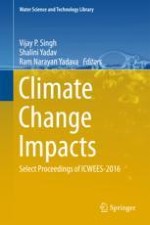2018 | OriginalPaper | Chapter
Changes in ENSO and IOD Effects on the Extreme Rainfall of Hyderabad City, India
Authors : V. Agilan, N. V. Umamahesh
Published in: Climate Change Impacts
Publisher: Springer Singapore
Activate our intelligent search to find suitable subject content or patents.
Select sections of text to find matching patents with Artificial Intelligence. powered by
Select sections of text to find additional relevant content using AI-assisted search. powered by
